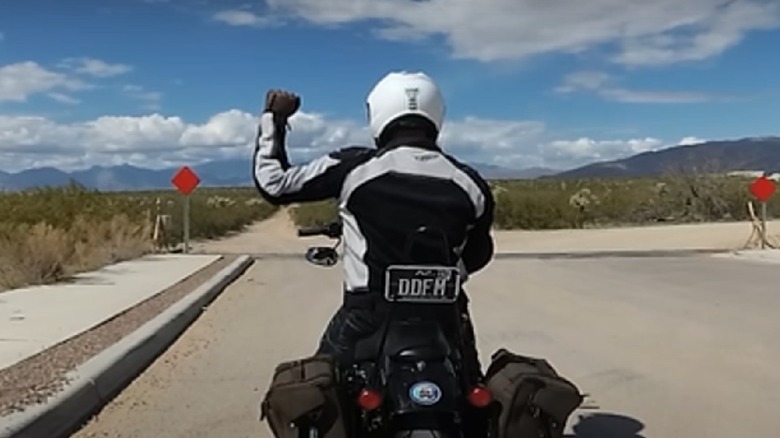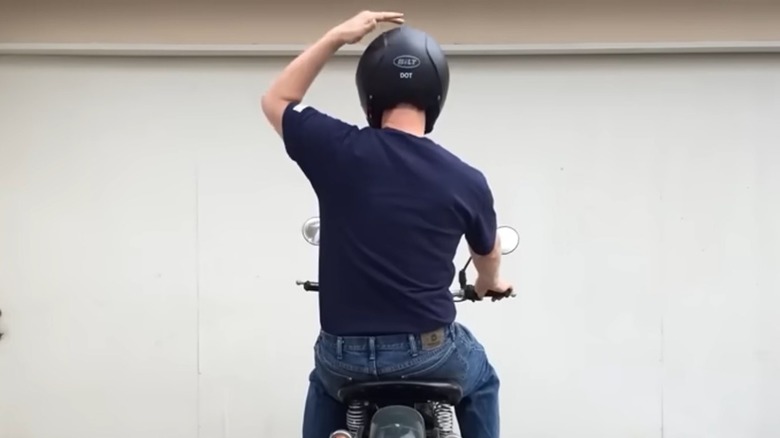Common Motorcycle Hand Signals Every Rider Should Know
Common hand signals and how to legally use them are among the most important tips every motorcycle rider should know. State driving laws contain provisions for hand signals that apply not only to motorcycle riders, but other drivers as well. It's important for everyone on the road to understand proper hand signals used by drivers without tail lights or turn signals. Section 42-4-609 of Colorado's State Statue, for example, makes provisions for three basic hand signals: left turn, right turn, and slowing or stopping. The law requires hand signals to extend from the left side of the vehicle and makes violation a punishable offense.
To properly execute a hand signal indicating an impending left turn, simply extend your left arm and hand horizontally. The hand signal for making a right turn calls for the left hand and arm to extend upward, typically with the arm bent 90-degrees at the elbow. The timing of these signals is much the same as any other turn signal, except having both hands on the bars are preferred for executing the turn, so there's no way to signal while turning.
The hand signal for slowing or stopping is similar to a right turn, except the hand and forearm are extended downward. Emergency stops are tricky, as using one hand to signal and one on the bars limits the amount of control the rider has over the motorcycle. This is one of many reasons taking a motorcycle safety course is a good idea.
Besides basic hand signals, what other hand signals should motorcycle riders know?
Motorcycle rider-focused organizations like Harley-Davidson Insurance and The Twisted Road Blog add nuances to basic hand signals and recommend more signals that allow riders to relay important information. For example, both groups add facing the palm of the left hand down to the basic left turn signal, making a fist for right turns, and the palm facing rearward for stopping.
Groups of motorcyclists also use several hand signals to communicate with one another. If you're new to a group or have someone new join your group for the first time, it's a good idea to review advanced hand signals as a group beforehand. The leader of the group will often raise the left arm with palm facing forward, telling the group to follow them. If a group leader pulls alongside you, points to your bike and swings their arm forward, you should follow them or take the position of group leader.
Road hazards are indicated by pointing with the left hand or right leg depending on which side of the road it's on. Group leaders may indicate the need for single or double-file formation by extending one or two fingers from a raised left hand, riders in the group should relay the signal to those behind them. If you see fellow riders tapping the tops of their heads, use caution as there could be an accident or law enforcement ahead.

